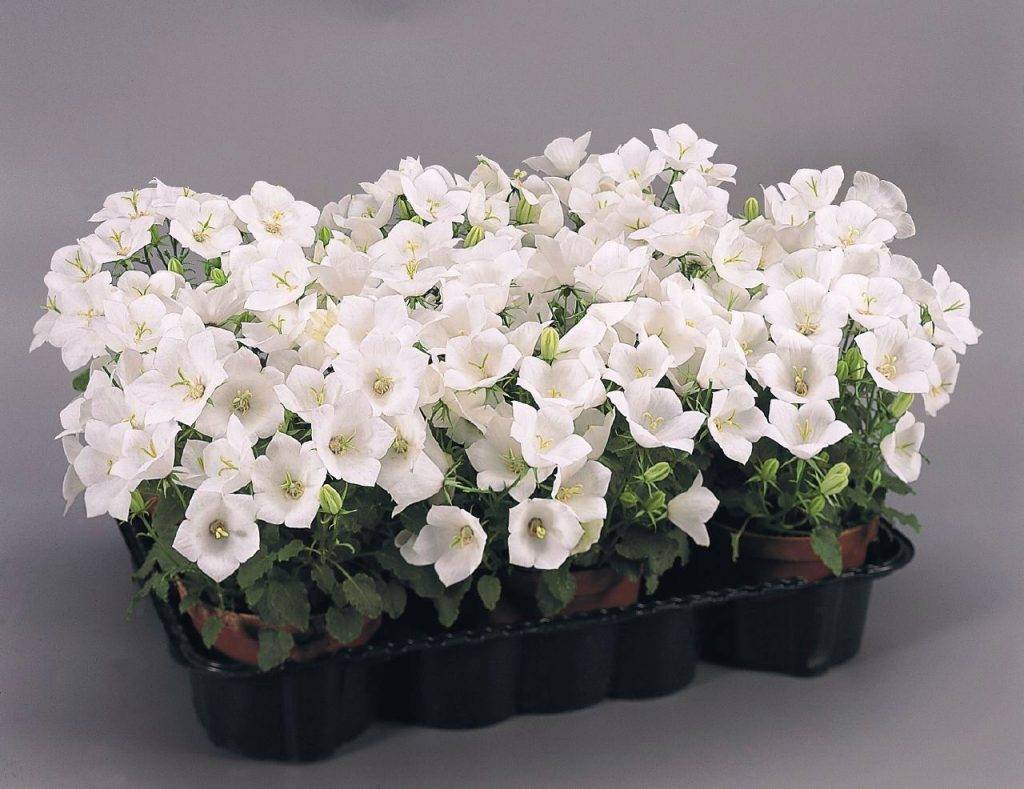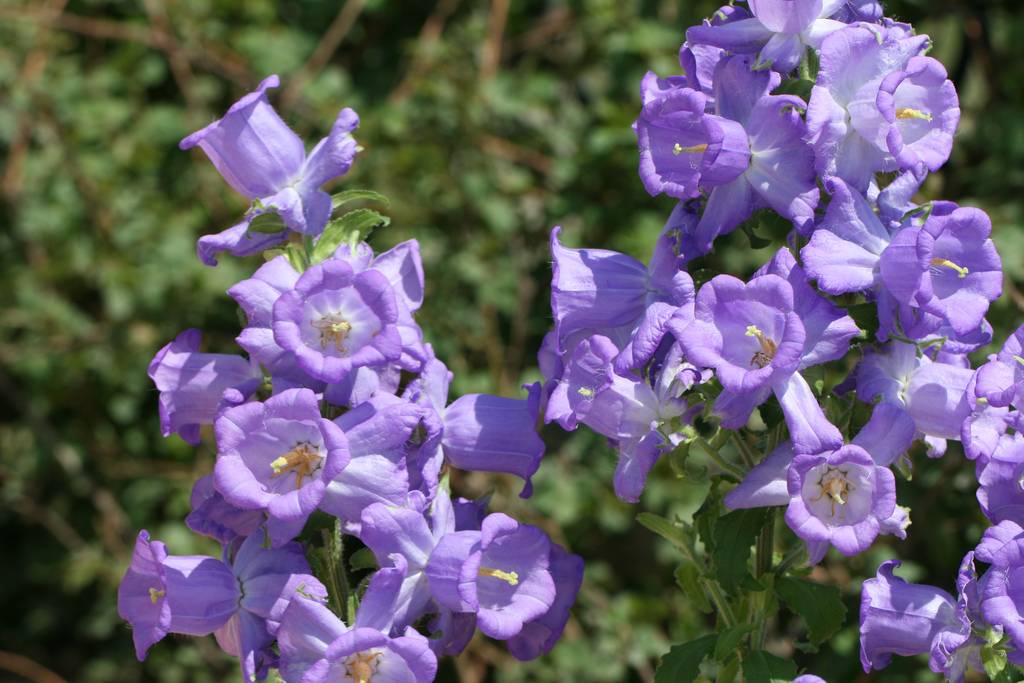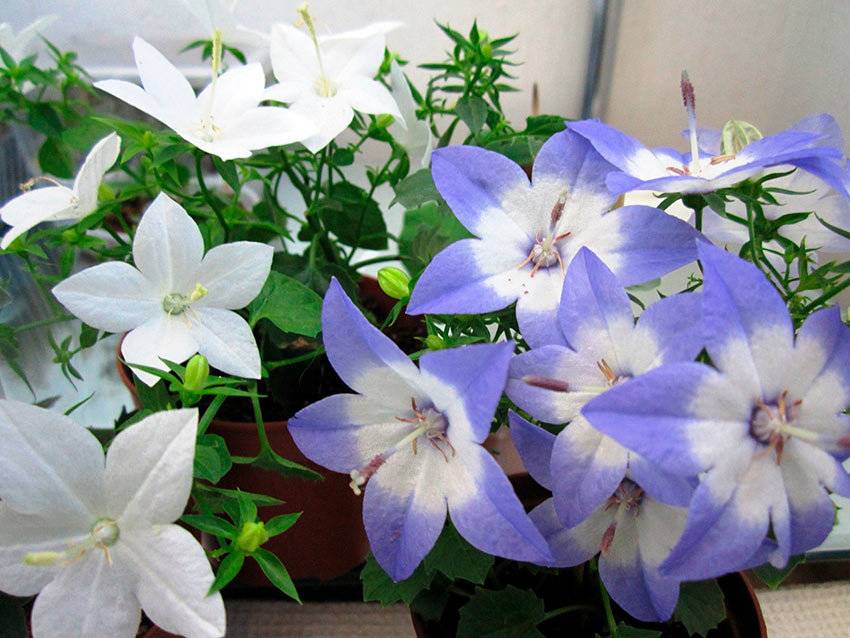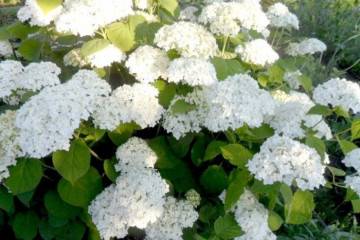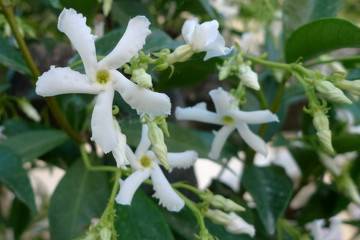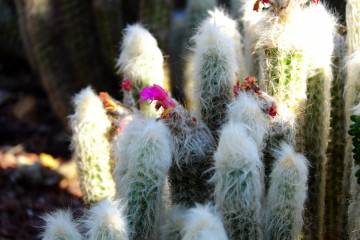Indoor bride flower - what is the name of the plant?
Content:
Man has always tried to decorate his home, to make it comfortable and happy. Most often, indoor flowers were used for this. Many peoples had a huge list of plants with magical powers to protect the owners of the house from disease, evil eye, damage, poverty.
Among these plants, one often remembers the windows of grandmothers, decorated with pots with beautiful bells of white and blue flowers. The bride and groom called this flower. Creating a special energy, silent helpers formed an atmosphere of respect, family harmony, love. The happy bride grew an amazing flower on her own and tried to preserve the snow-white miracle throughout her family life. Now the popularity of the plant has increased greatly. The information from this article will help the bride how to care for a potted flower.
What is this plant
The scientific name for the plant is bell, or campanula, campanula. Botanists attribute it to the genus of ampelous plants from the Bellflower family.
The plant grows to about 0.5 m in height. Light green shoots with bright green leaves (shaped like a heart) hang down. Shoots are long (up to 50 cm) and thin. They sink down under the weight of the flowers. The stem is in an upright position, reaching a height of 15 cm.The shoots are abundantly covered with white small inflorescences with a diameter of about 4 cm.
During flowering, a small bush of the Campanula variety, the bride Alba looks like a waterfall with snow-white stars (they are formed from five graceful petals). Flowers in different types of campanula can be blue, purple, pink, lilac.
Bride and groom: the origin of the name, what flowers are called that
The flower got its romantic name because of its delicate flowers. It seems that the melody of blue and white bells sounds like a declaration of love for the bride and groom. It is not for nothing that these flowers are presented for a wedding. There are many beautiful legends about the flower. One of them says that back in 1500, Bishop Paulino heard the unearthly ringing of swinging bells while walking. At his suggestion, the same flowers were cast from copper and became the first church bells.
The bride and groom develop best together (like a real married couple). This is not the power of magic, but the effect of cross-pollination, which creates the conditions for optimal plant development.
According to ancient beliefs, lush flowering plants speak of peace, tranquility, love in the family. Campanula flower bride and groom brings harmony to the house, maintains the order of the nervous system of family members.
What flowers are correct to call the bride and groom
The genus of herbaceous perennials from the Kolokolchikov family numbers about 300 species. Numerous varieties can be one- and perennial. It is important to know that perennials often degenerate. Better to grow annual varieties.
For garden plots, perennial species are recommended: milky-flowered, nettle-leaved, broad-leaved. In the apartments, terry, peach-leaved campanula and tailor's are grown. The most popular type of houseplant, the bride, is the campanula isotopia (hybrids Alba bride and Maya - the groom indoor flower).
The basics of growing, flower care
An unpretentious plant will delight the owners for a long time with abundant flowering if the following growing conditions are met.
Choosing a place in the house
An incorrect location of the pot leads to a loss of decorativeness of the plant: with a sunburn, translucent spots of an indefinite shape appear. At the same time, spraying accelerates their formation. Lack of light manifests itself in the development of thin, weak leaves on elongated shoots. Based on this, the correct solution would be to place a flowerpot with a flower next to an east, west orientation window. Installation on a southern windowsill will require the installation of protective equipment in hot weather.
Experienced growers recommend turning the pot at a small angle every week to get a beautiful symmetrical bush.
Temperature
The optimal temperature conditions for a flower bride are values of 20-25 ° C in summer and about 15 ° C in winter. The flower pot should not stand in drafty areas. It cannot be placed next to vines. The shoots of the plant must not be lifted up, attached to the support.
An important element of care is the timely removal of yellowed leaves and shoots. In case of disease of the main stem, it is recommended to completely remove it without damaging the young shoots. In summer, it is useful to take pots with a plant out to the balcony, to the garden.
Pot and soil selection
For a convenient location of the roots (they grow quickly), a low and wide container is selected. Having made high-quality drainage, the container is filled with a loose, breathable, slightly alkaline soil. In the case of self-preparation of the soil mixture, equal parts of peat, humus, leafy earth, and sand are taken. If necessary, the soil is bought in shopping centers. The composition is intended for decorative flowering species.
The first sign of an urgent plant transplant after purchase in a store (in a flower market) is the appearance of dried buds. It is better if this is done in the spring, in the fall.
Watering and humidity
The indoor flower bride can do without daily watering for some time (which is convenient for travel lovers, busy owners). In the summer, when the bush sparkles with bells, it is better not to leave it for a long time. It is very important to monitor the condition of the soil in the pot. It should not be too dry and with excess water in the pan. In summer, the plant is watered once every two days. In the cold season, no more than once a month. The flower at this time is at rest.
Water for irrigation is used soft, settled with a temperature of about 22-24 ° C. Together with watering, fertilizing is combined with fertilizers for flowering plants. During the period of active flowering, this should be done at least once every 2 weeks.
Violation of the correct irrigation regimes (for example, waterlogging of the soil) provokes the development of rot, fungal diseases. In this case, the stems, leaves turn black, and the flower dies. You cannot do without the use of fungicidal preparations.
Standard values of air humidity of 40-50% provide normal conditions for the development of campanula. During the summer heat, the flower can be sprayed, but make sure that no water gets on the inflorescences. It is better to put moss in the pot and maintain moisture by watering it.
When kept in too dry air, scabies and spider mites appear on the plants. They get rid of them with the help of actara, phytoverm, actellik and other drugs. From folk remedies, soap solution, medical alcohol, infusion of onions, garlic are often used.
Reproduction
Those who want to plant several copies of the groom or bride can use any of the propagation methods for this: seeds, dividing a bush, cuttings, one-year shoots.
Applying simple techniques for growing indoor flowers, the bride and groom, you can constantly admire the beautiful delicate inflorescences. Belief in the eternal legends about the flower (which made it possible to call them the bride and groom) will strengthen family relationships, fill them with care, happiness, love.

